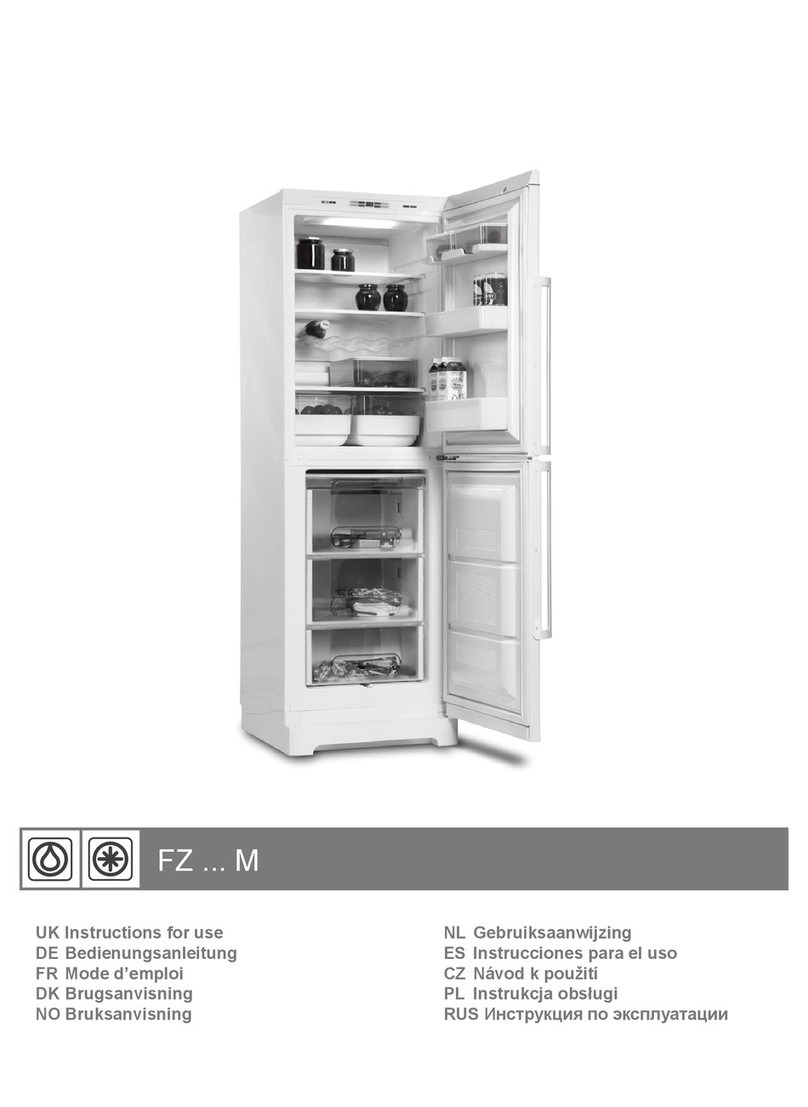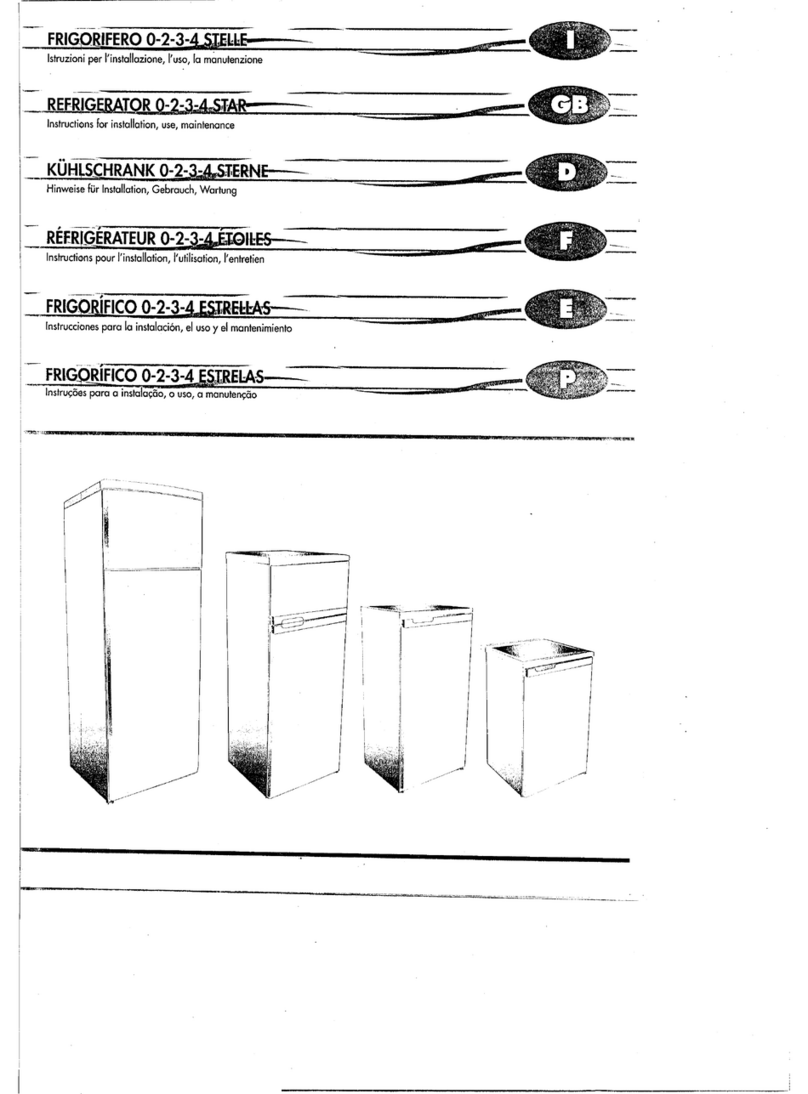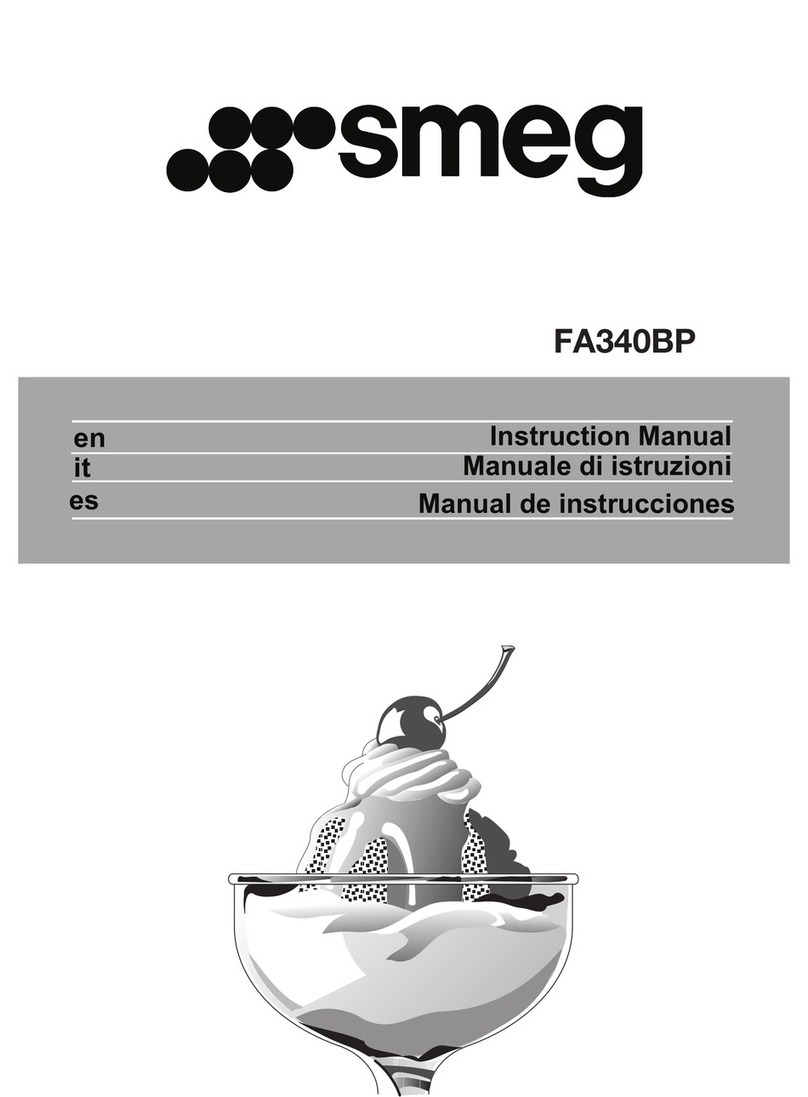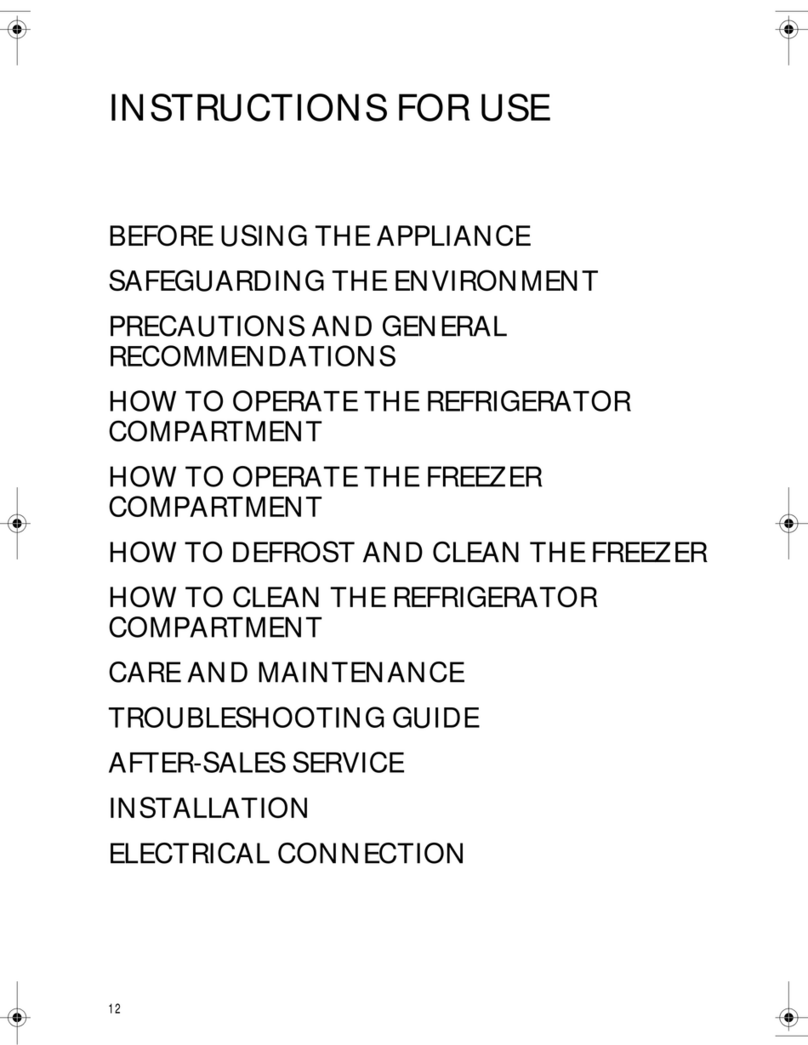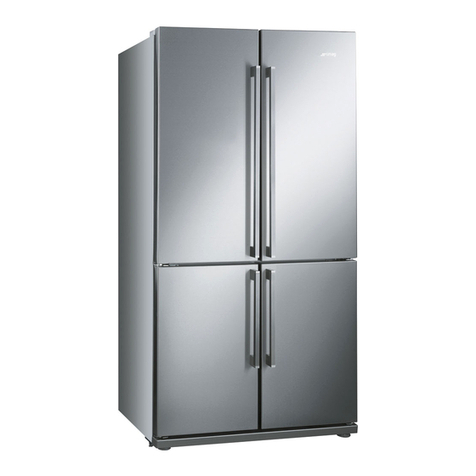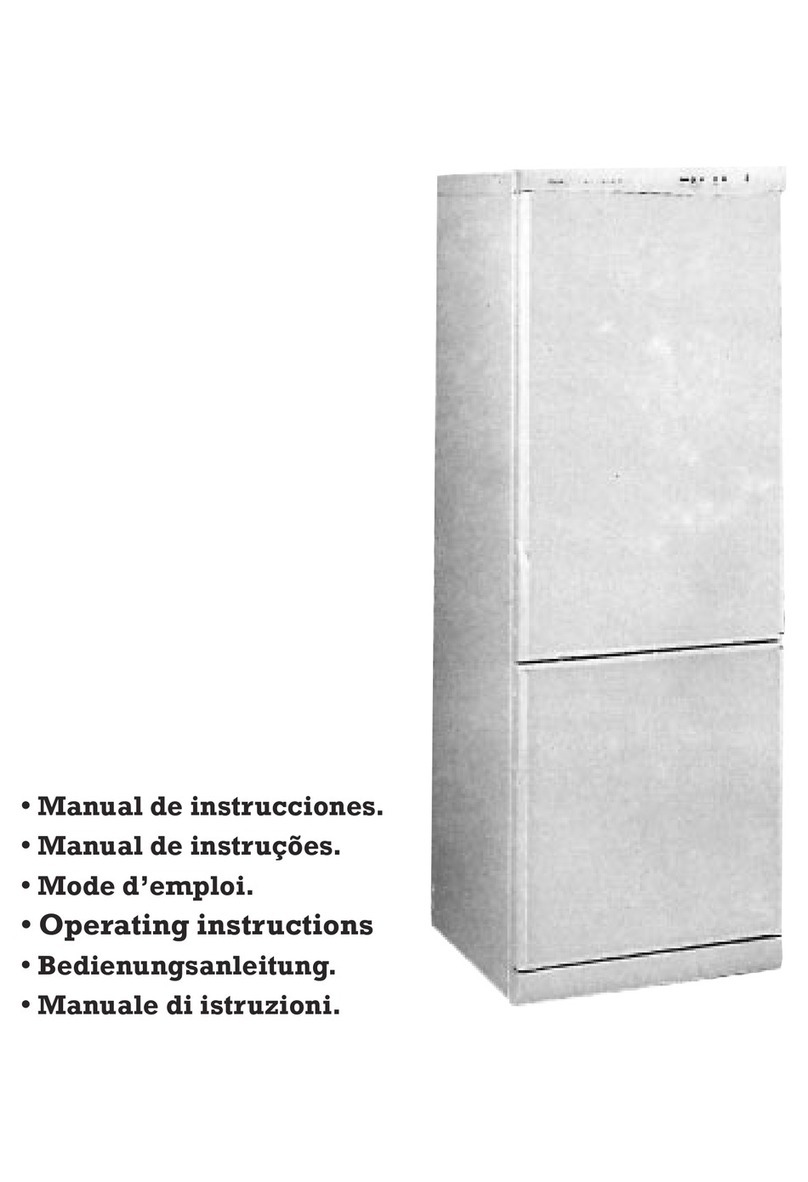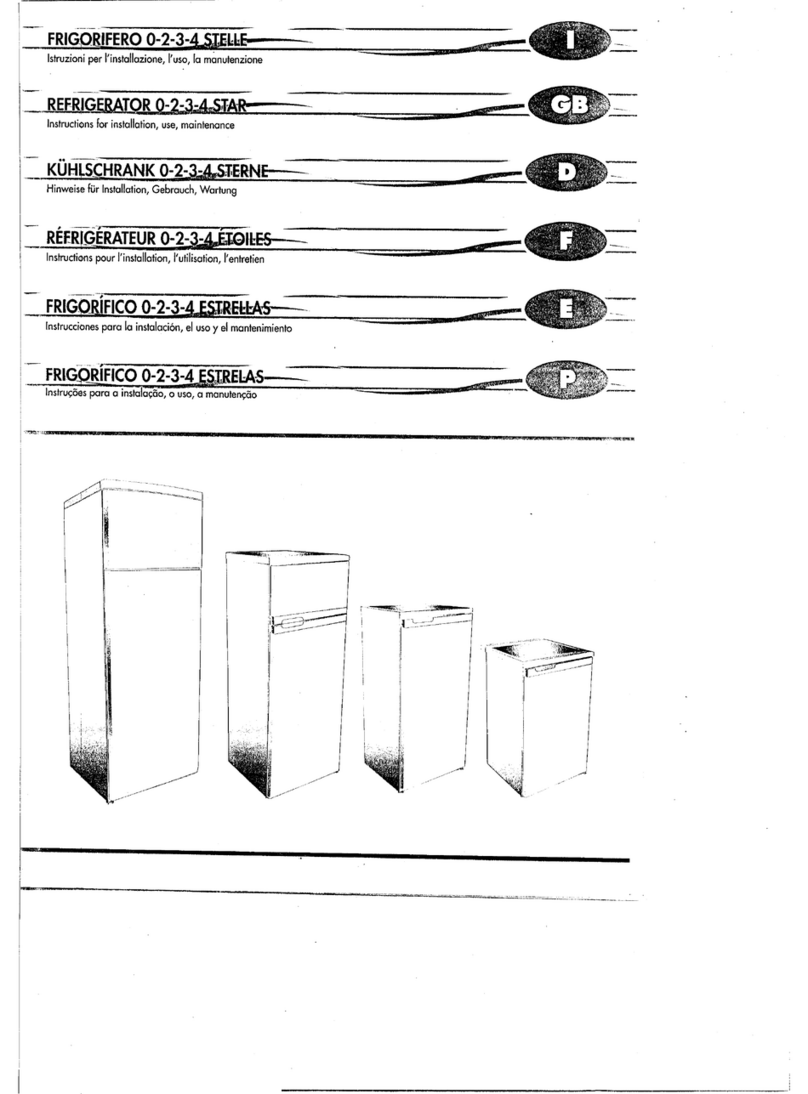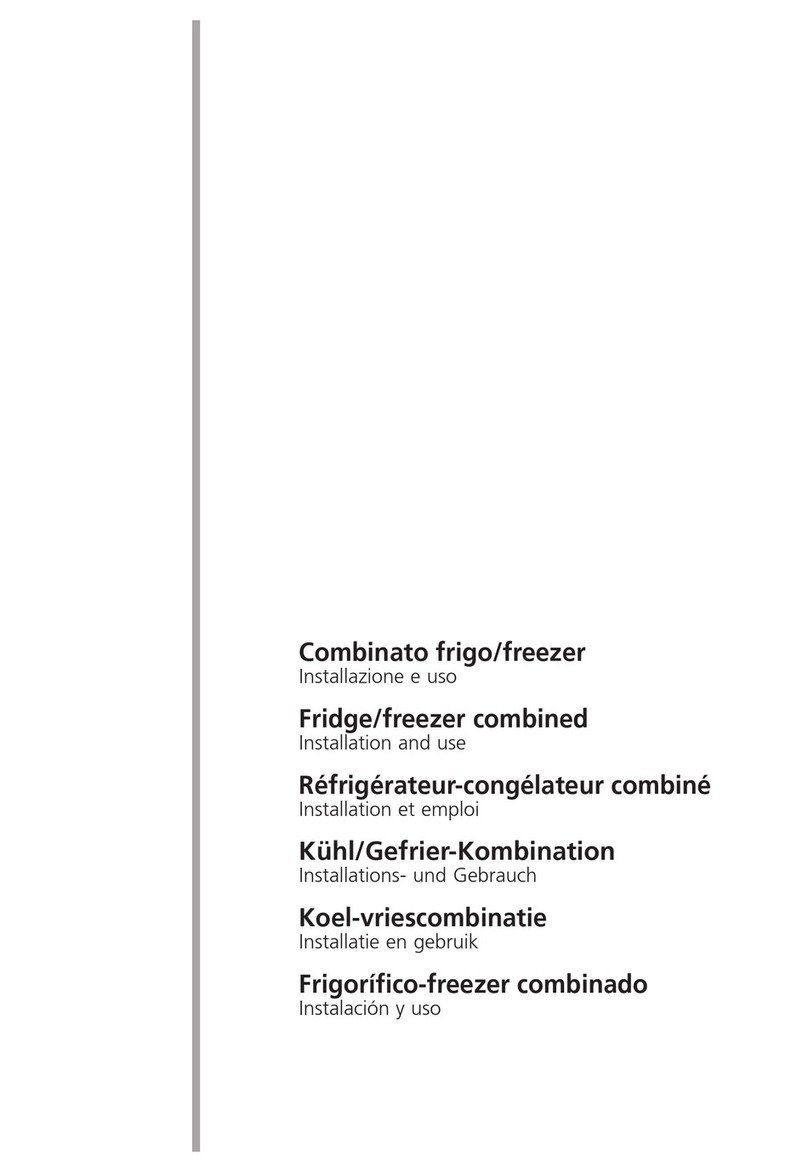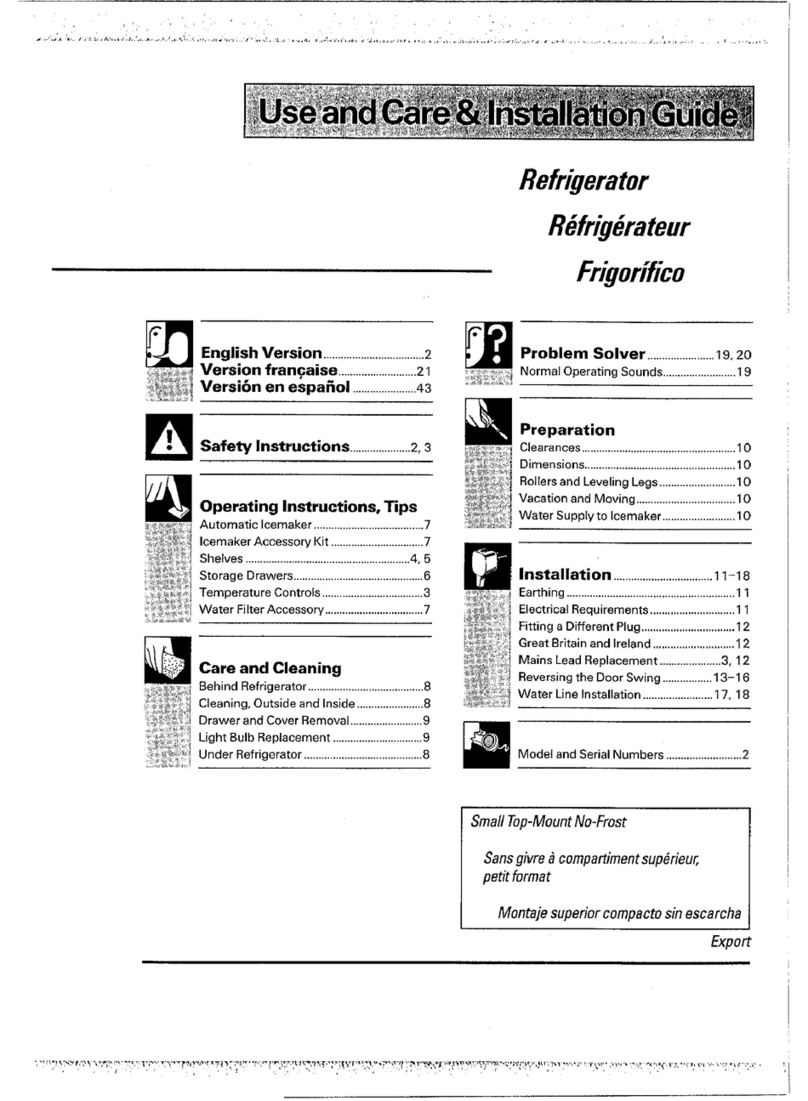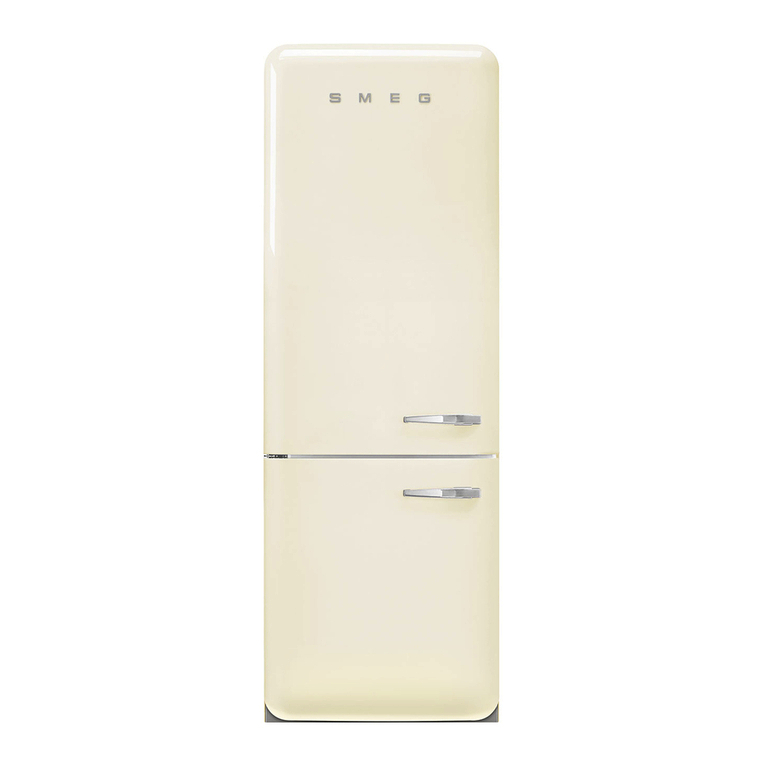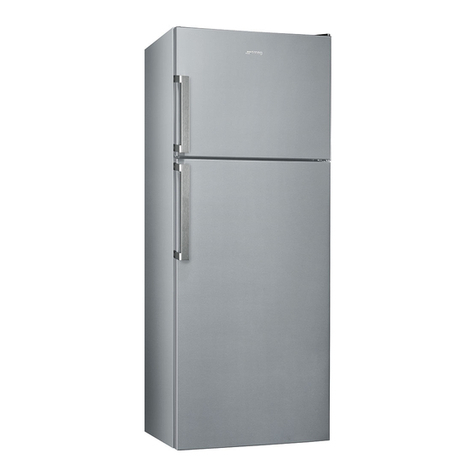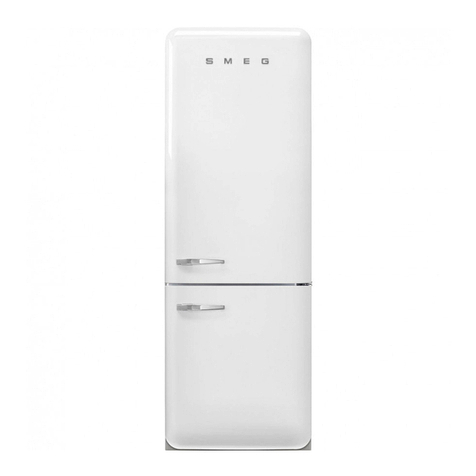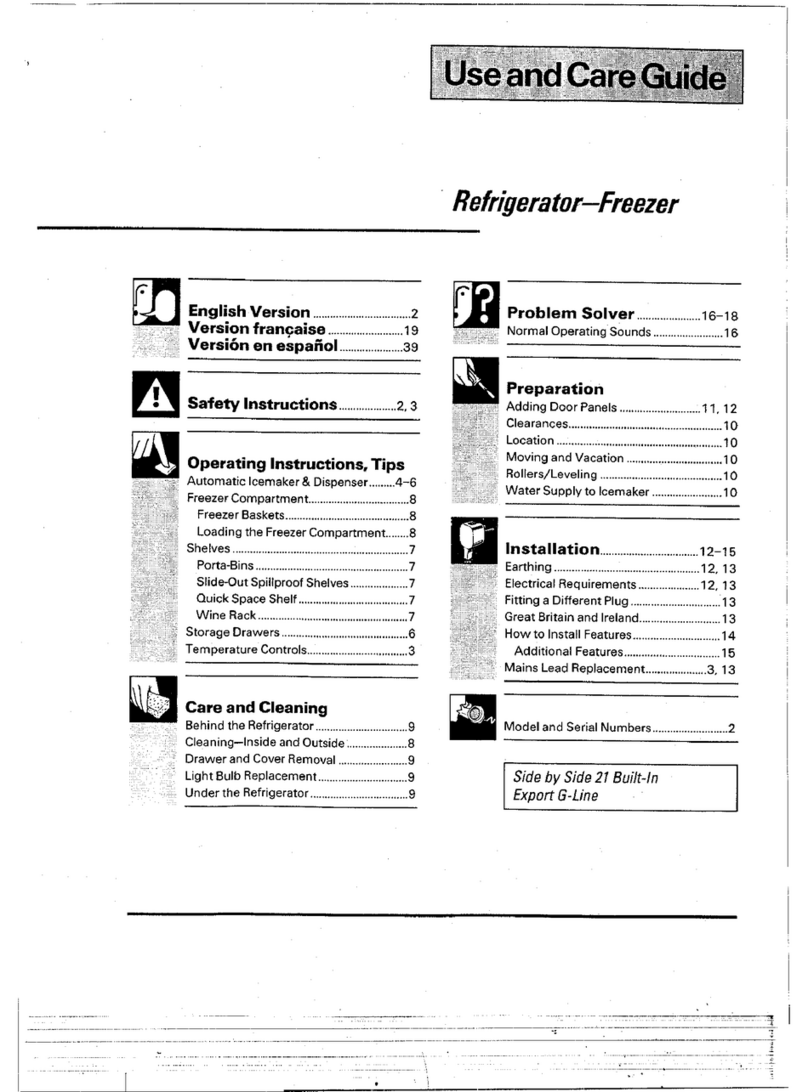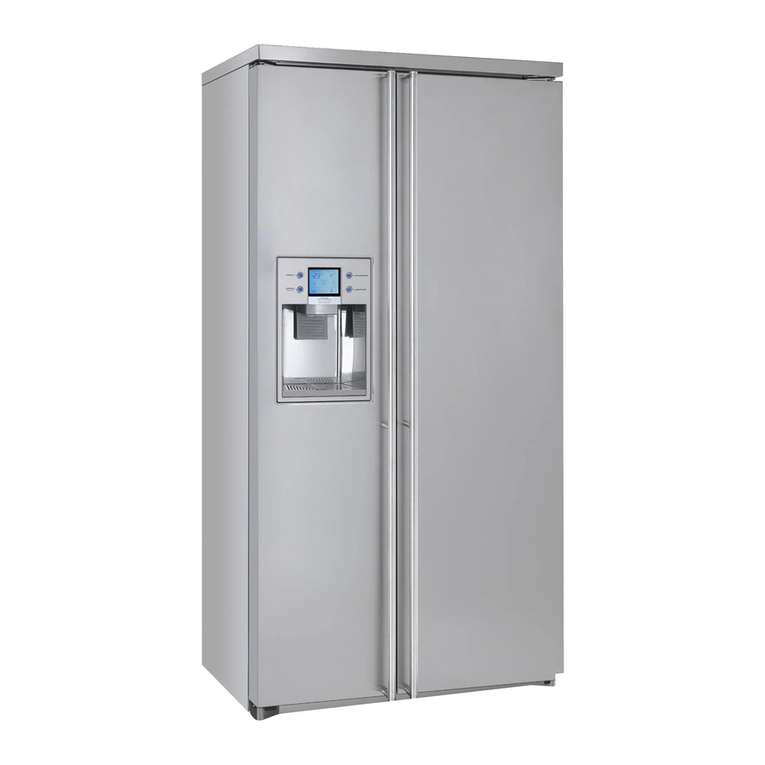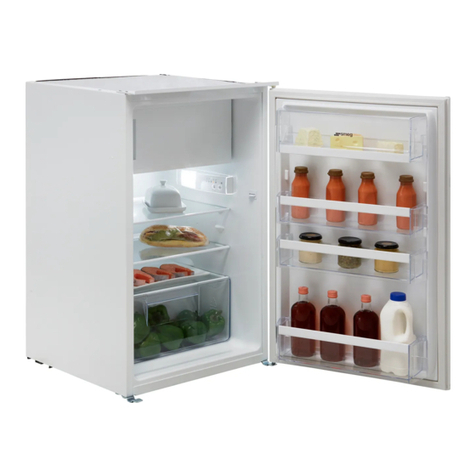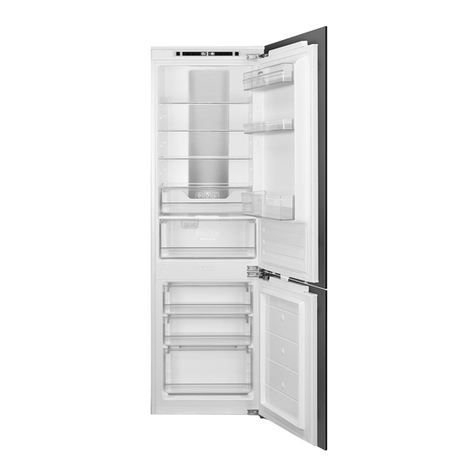
EN - 32
• Do not place explosive or ammable
material in your fridge. Place drinks with
high alcohol content vertically in the
fridge compartment and make sure their
tops are tightly closed.
• When removing ice from the ice-making
compartment, do not touch it. Ice may
cause frost burns and/or cuts.
• Do not touch frozen goods with wet
hands. Do not eat ice-cream or ice cubes
immediately after they are removed from
the ice-making compartment.
• Do not re-freeze thawed frozen food. This
may cause health issues such as food
poisoning.
Old and Out-of-order Fridges
• If your old fridge or freezer has a
lock, break or remove the lock before
discarding it, because children may
get trapped inside it and may cause an
accident.
• Old fridges and freezers contain
isolation material and refrigerant with
CFC. Therefore, take care not to harm
environment when you are discarding
your old fridges.
CE Declaration of conformity
We declare that our products meet the
applicable European Directives, Decisions
and Regulations and the requirements
listed in the standards referenced.
Disposal of your old appliance
The symbol on the product or on
its packaging indicates that this
product may not be treated as
household waste. Instead it shall
be handed over to the applicable
collection point for the recycling of electrical
and electronic equipment. By ensuring
this product is disposed of correctly,
you will help prevent potential negative
consequences for the environment and
human health, which could otherwise be
caused by inappropriate waste handling
of this product. For more detailed
information about recycling of this product,
please contact your local city ofce, your
household waste disposal service or the
shop where you purchased the product.
Packaging and the Environment
Packaging materials protect
your machine from damage that
may occur during transportation.
The packaging materials are
environmentally friendly as they are
recyclable. The use of recycled material
reduces raw material consumption and
therefore decreases waste production.
Notes:
• Please read the instruction manual
carefully before installing and using your
appliance. We are not responsible for the
damage occurred due to misuse.
• Follow all instructions on your appliance
and instruction manual, and keep this
manual in a safe place to resolve the
problems that may occur in the future.
• This appliance is produced to be used
in homes and it can only be used in
domestic environments and for the
specied purposes. It is not suitable for
commercial or common use. Such use
will cause the guarantee of the appliance
to be cancelled and our company will not
be responsible for any losses incurred.
• This appliance is produced to be used
in houses and it is only suitable for
cooling / storing foods. It is not suitable
for commercial or common use and/or
for storing substances except for food.
Our company is not responsible for any
losses incurred by inappropriate usage of
the appliance.
Internal lighting
WARNING!
Risk of electric shock.
• Concerning the lamp(s) inside this
product and spare part lamps sold
separately: These lamps are intended to
withstand extreme physical conditions
in household appliances, such as
temperature, vibration, humidity, or are
intended to signal information about the
operational status of the appliance. They
are not intended to be used in other
applications and are not suitable for
household room illumination.
